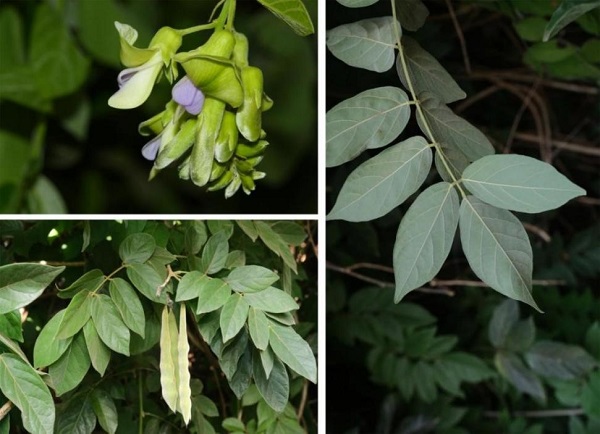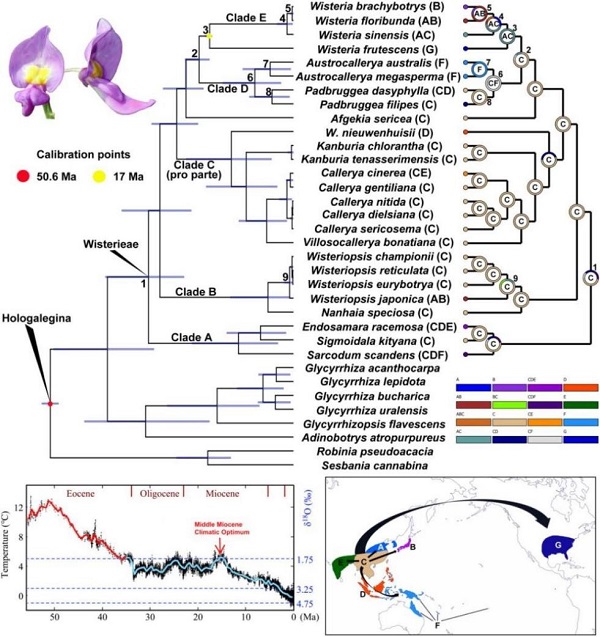

A recent study, concerning phylogenomics of the IRLC (inverted repeat-lacking clade) and the spatiotemporal evolution of the tribe Wisterieae, was published in Molecular Phylogenetics and Evolution by Dr. Lei Duan under the guidance of prof. Hong-Feng Chen from South China Botanical Garden of the Chinese Academy of Sciences, China, and prof. Jun Wen from Smithsonian Institution, U.S.A.
The IRLC is one of the most derived clades within the subfamily Papilionoideae of Leguminosae, and includes various economically important plants, e.g., chickpeas, peas, liquorice, and the most species-rich genus of angiosperms, Astragalus, as well as the molecular model plant, Medicago truncatula. Based on genome skimming data, we reconstruct the phylogenomic framework of the IRLC. The tribe Caraganeae was redefined to contain Caragana only, and tribe Astragaleae is reduced to the Erophaca-Astragalean clade. The chloroplast capture scenario was hypothesized for the topological incongruences between the chloroplast (cp) CDS and nuclear ribosomal DNA (nrDNA) trees in both Glycyrrhizinae-Adinobotrys-Wisterieae Clade and Chesneyeae-Caraganeae-Hedysareae Clade.
Tribe Wisterieae is one of the earliest diverged groups of the IRLC, contains the popular gardening plants, Wisteria, but its generic delimitation and historical biogeography need further clarifications. Based on the cp CDS and nrDNA trees, thirteen genera are herein supported within Wisterieae, including a new genus, Villosocallerya, segregated from Callerya (Fig. 1). Our biogeographic analyses (Fig. 2) suggest that Wisterieae originated in the late Eocene (~38.87 million years ago, Ma) and its most recent common ancestor (MRCA) was distributed in continental southeastern Asia. By the middle Miocene (15.97~11.63 Ma), the MRCA of Wisteria migrated to North America via the Bering land bridge, and he ancestor of Austrocallerya and Padbruggea migrated to the Wallacea-Oceania area, which split in the early Pliocene (5.333~3.6 Ma). In the Pleistocene (2.58~0.0117 Ma), Wisteria brachybotrys, W. floribunda and Wisteriopsis japonica reached Japan, and Callerya cinerea dispersed to South Asia.
This study provides a solid tribal-level phylogenetic framework for further evolutionary/biogeographic/systematic investigations on the ecologically diverse and economically important IRLC legumes.
Article link: https://www.sciencedirect.com/science/article/pii/S1055790321001688

Fig. 1. Villosocallerya bonatiana’s flowers (upper-left; Photoed by Xin-Xin Zhu), fruits (lower-left; photoed by Zhuo Zhou) and leaf back (right; photoed by Zhuo Zhou)

Fig. 2. Historical biogeographic analyses of Wisterieae. Left tree, dating result. Right tree, ancestral area reconstruction

